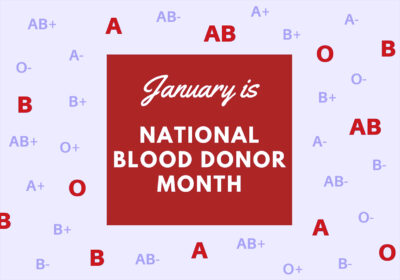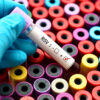Pod Health would like to recognize and celebrate the critical role blood donors play in the healthcare system. Hospitals and healthcare facilities rely on the generosity of blood donors to keep their patients alive.
Why do we need blood donors?
Every two seconds, someone needs blood. Over 15 million units of blood products are transfused every year in the US–and there is no substitute for blood.Blood donations are literally used to save the lives of people every day. There is a misconception that most blood is given to patients suffering trauma having been in an accident, however most blood donations go to those who are living with chronic illnesses such as blood disorders, those undergoing organ transplants and other surgeries such as heart surgery, people being treated for cancer, mothers giving birth, newborn babies, and trauma patients, just to name a few.
And while every patient and their condition is different, so is their blood type. Meaning every patient receiving a blood transfusion must be closely matched to a donor who has a blood type that can be safely transfused to the recipient.
There are patients who may need ongoing blood transfusions every one or two weeks to treat chronic conditions, for the rest of their lives.
There is no substitute for blood
While 62% of the US population is eligible to give blood, only 3% of people actually do. One in three people will need blood in their lifetime, and many will require ongoing transfusions to live healthy lives–it is critical people commit to giving blood on a regular basis.You can give blood every two months, and every donation can save up to three lives.
It’s in your blood
Blood is produced in the bone marrow and is made up of several components. When you give a bag of “whole blood” that looks like red liquid, it actually contains platelets, red cells, plasma, and white cells. Your “whole blood” donation is separated into each component and used to treat different patients for different conditions.Red Cells: These are disc shaped cells and go to save the lives of patients such as premature infants, trauma victims, surgical patients, people battling cancer, sickle cell, kidney disease, and anemia
Platelets: Small colorless cell fragments that form clots and help us reduce or stop bleeding. Platelets are often given to leukemia and cancer patients, people undergoing cardiac surgery, burn victims, organ and bone marrow transplant recipients, and individuals with bleeding disorders. Platelet donation is a very special type of donation. While it takes a little extra time, not everyone is eligible to donate platelets - so this life saving donation type is always in high demand.
Plasma: A pale yellow mixture of water, proteins, and salt that our red cells, platelets, and white cells “swim” in. Plasma helps burn victims, cardiac surgery patients, liver transplant recipients, and patients suffering from shock or bleeding and immune disorders. Plasma not needed for transfusion may be made into other lifesaving products
White blood Cells: These cells, which are part of the immune system as they help your body fight off infections and other diseases, are filtered out from your donation and discarded (not transfused to a patient) as this reduces the risk of transfusion-related reactions.
Your type is needed every day
There are four types or groups of blood, O, A, B, AB. Each blood type is also identified as either Rh positive or negative: O+, A+, B+, AB+ or O-, A-, B-, AB-. Approximately 85% of the U.S. population is Rh-positive, with the remaining being the far less common Rh-negative. Another common misconception is that more RH-negative donors are needed due to the low percentage of people with that blood type. However, it’s actually the opposite. When the majority of people in a community are RH-positive, that means it is more common that a RH-positive patient will need a blood transfusion. Because donors and recipients must be safely matched by blood types - they need more of the type of blood that is most commonly used.The only exception to this is the constant need for O- donors. O- donors are called the universal donor because their blood type is the only type that can be safely transfused to anyone in an emergency. Blood types need to be closely matched to a recipient's blood type - they can only receive blood that is compatible with their own type. But O- blood can be given to anyone in need. What is just important to know is that O- donors can only receive O- blood.

Who does your blood donation help?
Blood donors are literal lifesavers. Thousands of people every day rely on the generosity of blood donors to keep them alive. To read stories about where your blood donation goes and who you help, visit the New York Blood Center website.Who can give blood?
Giving blood is easy and only takes around an hour - the donation itself is around 10 minutes. Individuals should be in good health, at least 17 years old (or 16 with parental consent), meet weight and height requirements, and meet some other health and wellness eligibility criteria. These guidelines are in place to ensure the safety and well-being of both the donor and the patient receiving the blood.How to donate blood or support your local community blood bank
Are you ready to donate blood? Do you have friends, family, and colleagues you can entourage to go with you?New York Blood Center has 19 donor centers located throughout New York and New Jersey and runs multiple blood drives a day. Visit their website to find a donation location near you!
If you are unable to give blood, you can still support this lifesaving cause. Host a blood drive, encourage your community to give blood, raise money for research focussing on blood donation, or donate your time and help out at your local donor center or blood drive.
Go on, be a lifesaver
Blood donors are heroes to millions of Americans who rely on their generosity and altruistic spirit. Donating blood is an easy way to save lives and get that feel-good feeling. The need for blood donors never stops. Roll up your sleeves, give blood, and save a life today. After you’ve donated, sit back and enjoy your free cookie while you think about the possible three lives you just saved!Disclaimer: This blog does not provide medical advice. The information in this blog is for informational purposes only and is not intended to be a substitute for professional medical advice, diagnosis, or treatment. Always seek the advice of your physician or other qualified healthcare provider with any questions you may have regarding a medical condition or treatment and before undertaking a new health care regimen.







